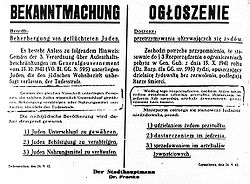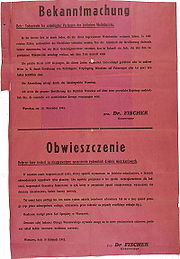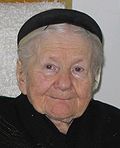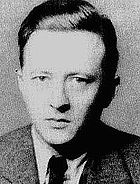
Polish Righteous among the Nations
Encyclopedia


Poles
thumb|right|180px|The state flag of [[Poland]] as used by Polish government and diplomatic authoritiesThe Polish people, or Poles , are a nation indigenous to Poland. They are united by the Polish language, which belongs to the historical Lechitic subgroup of West Slavic languages of Central Europe...
citizens have the world's highest count of individuals awarded medals of Righteous among the Nations
Righteous Among the Nations
Righteous among the Nations of the world's nations"), also translated as Righteous Gentiles is an honorific used by the State of Israel to describe non-Jews who risked their lives during the Holocaust to save Jews from extermination by the Nazis....
, given by the State of Israel to non-Jews who saved Jews
Jews
The Jews , also known as the Jewish people, are a nation and ethnoreligious group originating in the Israelites or Hebrews of the Ancient Near East. The Jewish ethnicity, nationality, and religion are strongly interrelated, as Judaism is the traditional faith of the Jewish nation...
from extermination during the Holocaust
The Holocaust
The Holocaust , also known as the Shoah , was the genocide of approximately six million European Jews and millions of others during World War II, a programme of systematic state-sponsored murder by Nazi...
. There are 6,266 Polish men and women recognized as "Righteous" to this day, amounting to over 25 per cent of the total number of 22,765 honorary titles awarded already.
It is estimated by one study that hundreds of thousands of Poles concealed and aided hundreds of thousands of their Polish-Jewish neighbors. Many of these initiatives were carried out by individuals, but there also existed organized networks of Polish resistance
Polish resistance movement in World War II
The Polish resistance movement in World War II, with the Home Army at its forefront, was the largest underground resistance in all of Nazi-occupied Europe, covering both German and Soviet zones of occupation. The Polish defence against the Nazi occupation was an important part of the European...
who was dedicated to aiding Jews—most notably, the Żegota
Zegota
"Żegota" , also known as the "Konrad Żegota Committee", was a codename for the Polish Council to Aid Jews , an underground organization of Polish resistance in German-occupied Poland from 1942 to 1945....
organization.
In German-occupied Poland
General Government
The General Government was an area of Second Republic of Poland under Nazi German rule during World War II; designated as a separate region of the Third Reich between 1939–1945...
the task of rescuing Jews was especially difficult and dangerous. All household members were punished by death if a Jew was found concealed in their home or on their property. One study estimates of the number of Poles who were killed by the Nazis for aiding Jews, among them 704 posthumously honored with medals, as high as tens of thousands.
Activities
Before World War IIWorld War II
World War II, or the Second World War , was a global conflict lasting from 1939 to 1945, involving most of the world's nations—including all of the great powers—eventually forming two opposing military alliances: the Allies and the Axis...
, Poland's Jewish community had numbered between 3,300,000 and 3,500,000 persons or about 10 percent of the country's total population. During World War II
World War II
World War II, or the Second World War , was a global conflict lasting from 1939 to 1945, involving most of the world's nations—including all of the great powers—eventually forming two opposing military alliances: the Allies and the Axis...
, Germany's Nazi regime sent millions of deportees from every European country to the concentration camps it set in the General Government
General Government
The General Government was an area of Second Republic of Poland under Nazi German rule during World War II; designated as a separate region of the Third Reich between 1939–1945...
in occupied Poland. Soon after war had broken out, the Germans began their extermination of Polish Jews, Jews and ethnic Polish mostly then Roms, Russians, Czech and others minorities of Poland
Holocaust in Poland
The Holocaust, also known as haShoah , was a genocide officially sanctioned and executed by the Third Reich during World War II. It took the lives of three million Polish Jews, destroying an entire civilization. Only a small percentage survived or managed to escape beyond the reach of the Nazis...
,. Most of them were quickly rounded up and imprisoned in ghetto
Ghetto
A ghetto is a section of a city predominantly occupied by a group who live there, especially because of social, economic, or legal issues.The term was originally used in Venice to describe the area where Jews were compelled to live. The term now refers to an overcrowded urban area often associated...
s, which they were forbidden to leave.
As it became apparent that not only were conditions in the ghettos terrible (hunger, diseases, etc.) but that the Jews were being singled out for extermination at Nazi concentration camps
Nazi concentration camps
Nazi Germany maintained concentration camps throughout the territories it controlled. The first Nazi concentration camps set up in Germany were greatly expanded after the Reichstag fire of 1933, and were intended to hold political prisoners and opponents of the regime...
, they increasingly tried to escape and hide in order to survive the war. Many Polish Gentile
Gentile
The term Gentile refers to non-Israelite peoples or nations in English translations of the Bible....
s concealed hundreds of thousands of their Jewish neighbors. Many of these efforts arose spontaneously from individual initiatives, but there were also organized networks dedicated to aiding the Jews.
Most notably, in September 1942 a Provisional Committee to Aid Jews
Provisional Committee to Aid Jews
The Provisional Committee to Aid Jews was founded on September 27, 1942, by Zofia Kossak-Szczucka and Wanda Krahelska-Filipowicz. The founding body consisted of Polish democratic Catholic activists associated with the Front Odrodzenia Polski, Polska Organizacja Demokratyczna, Związek Syndykalistów...
(Tymczasowy Komitet Pomocy Żydom) was founded on the initiative of Polish novelist Zofia Kossak-Szczucka
Zofia Kossak-Szczucka
Zofia Kossak-Szczucka was a Polish writer and World War II resistance fighter. She co-founded the wartime Polish organization Żegota, set up to assist Poland's Jews in escaping the Holocaust...
, of the famous artistic and literary Kossak
Kossak
Kossak is the surname of the 4 generations of notable Polish painters, writers and poets, descending from the historical painter Juliusz Kossak. The family includes:* Progenitor, Juliusz Kossak , Polish painter from the partitions period...
family. This body soon became the Council for Aid to Jews (Rada Pomocy Żydom), known by the codename Żegota
Zegota
"Żegota" , also known as the "Konrad Żegota Committee", was a codename for the Polish Council to Aid Jews , an underground organization of Polish resistance in German-occupied Poland from 1942 to 1945....
, with Julian Grobelny
Julian Grobelny
Julian Grobelny was an activist in the Polish Socialist Party beginning in 1915, and the President of Żegota from its inception in 1942....
as its president and Irena Sendler
Irena Sendler
Irena Sendler was a Polish Catholic social worker who served in the Polish Underground and the Żegota resistance organization in German-occupied Warsaw during World War II...
as head of its children's section.
It is not exactly known how many Jews were helped by Żegota, but at one point in 1943 it had 2,500 Jewish children under its care in Warsaw
Warsaw
Warsaw is the capital and largest city of Poland. It is located on the Vistula River, roughly from the Baltic Sea and from the Carpathian Mountains. Its population in 2010 was estimated at 1,716,855 residents with a greater metropolitan area of 2,631,902 residents, making Warsaw the 10th most...
alone. At the end of the war, Sendler attempted to return them to their parents but nearly all of them had died at Treblinka. It is estimated that about half of the Jews who survived the war (thus over 50,000) were aided in some shape or form by Żegota.
Jews were saved by the entire communities (see their partial list)
Rescue of Jews by Poles during the Holocaust
Polish Jews were the primary victims of the German Nazi-organized Holocaust. Throughout the German occupation of Poland, many Polish Gentiles risked their own lives—and the lives of their families—to rescue Jews from the Nazis. Grouped by nationality, Poles represent the biggest number of people...
with everyone engaged, such as in the villages of Markowa
Markowa
Markowa is a village in Łańcut County, Subcarpathian Voivodeship, in south-eastern Poland. It is the seat of the gmina called Gmina Markowa. It lies approximately south-east of Łańcut and east of the regional capital Rzeszów...
and Głuchów near Łańcut, Główne, Ozorków
Ozorków
Ozorków is a town in central Poland with 20,731 inhabitants , located on the Bzura River. It is situated in the Łódź Voivodeship , having previously been in Łódź Metro Voivodeship .- External links :* * *...
, Borkowo
Borkowo, Masovian Voivodeship
Borkowo is a village in the administrative district of Gmina Nasielsk, within Nowy Dwór Mazowiecki County, Masovian Voivodeship, in east-central Poland. It lies approximately west of Nasielsk, north of Nowy Dwór Mazowiecki, and north-west of Warsaw....
near Sierpc
Sierpc
Sierpc is a town in Poland, in the north-west part of the Masovian Voivodeship, about 125 km northwest of Warsaw. It is the capital of Sierpc County. Its population is 18,777 . It is located near the national road No 10, which connects Warsaw and Toruń...
, Dąbrowica
Dabrowica, Nisko County
Dąbrowica is a village in the administrative district of Gmina Ulanów, within Nisko County, Subcarpathian Voivodeship, in south-eastern Poland. It lies approximately east of Ulanów, east of Nisko, and north-east of the regional capital Rzeszów....
near Ulanów
Ulanów
Ulanów is a town in Nisko County, Subcarpathian Voivodeship, Poland, with 1,491 inhabitants .It has grammar and high schools along with 2 churches. One of the churches was set on fire in 2004, it was closed for a repairs and after about a year they opened the church again. Every year in June a...
, in Głupianka near Otwock
Otwock
Otwock is a town in central Poland, some southeast of Warsaw, with 42,765 inhabitants . It is situated on the right bank of Vistula River below the mouth of Swider River. Otwock is home to a unique architectural style called Swidermajer....
, Teresin near Chełm Rudka
Lublin Voivodeship
- Administrative division :Lublin Voivodeship is divided into 24 counties : 4 city counties and 20 land counties. These are further divided into 213 gminas....
, Jedlanka
Jedlanka, Lublin Voivodeship
Jedlanka is a village in the administrative district of Gmina Stoczek Łukowski, within Łuków County, Lublin Voivodeship, in eastern Poland. It lies approximately east of Stoczek Łukowski, west of Łuków, and north of the regional capital Lublin....
, Makoszka
Makoszka
Makoszka is a village in the administrative district of Gmina Dębowa Kłoda, within Parczew County, Lublin Voivodeship, in eastern Poland. It lies approximately west of Dębowa Kłoda, south-east of Parczew, and north-east of the regional capital Lublin....
, Tyśmienica, and Bójki
Bójki
Bójki is a village in the administrative district of Gmina Ostrów Lubelski, within Lubartów County, Lublin Voivodeship, in eastern Poland. It lies approximately north of Ostrów Lubelski, north-east of Lubartów, and north-east of the regional capital Lublin....
in Parczew
Parczew
Parczew is a town in eastern Poland, with a population of 10,281 . Situated in the Lublin Voivodeship , previously in Biała Podlaska Voivodeship . It is the capital of Parczew County.-History:...
-Ostrów Lubelski
Ostrów Lubelski
Ostrów Lubelski is a town in Gmina Ostrów Lubelski in Lubartów County, Lublin Voivodeship in Poland. Within the territory of the town and commune there are three lakes. These are Miejskie Lake, Kleszczów Lake and Czarne Lake. The commune is a typically agricultural area...
area, Mętów
Metów
Mętów is a village in the administrative district of Gmina Głusk, within Lublin County, Lublin Voivodeship, in eastern Poland. It lies approximately south of the regional capital Lublin.The village has a population of 890.-References:...
near Głusk
Lublin
Lublin is the ninth largest city in Poland. It is the capital of Lublin Voivodeship with a population of 350,392 . Lublin is also the largest Polish city east of the Vistula river...
– where "almost the entire population" rescued Jews – and in many other places. Numerous families who concealed their Jewish neighbors paid the ultimate price for doing so. Most notably, several hundred Poles were massacred in Słonim. In Huta Stara
Huta Stara
Huta Stara is a small village in the administrative district of Gmina Krasocin, within Włoszczowa County, Świętokrzyskie Voivodeship, in south-central Poland. It lies approximately east of Krasocin, east of Włoszczowa, and west of the regional capital Kielce.The village has a population of...
near Buczacz, all Polish Christians and the Jewish countrymen they protected, were burned alive in a church.
Risk
Capital punishmentCapital punishment
Capital punishment, the death penalty, or execution is the sentence of death upon a person by the state as a punishment for an offence. Crimes that can result in a death penalty are known as capital crimes or capital offences. The term capital originates from the Latin capitalis, literally...
of entire families, for aiding Jews, was the most draconian such Nazi practice against any nation in occupied Europe. On November 10, 1941, the death penalty was expanded by Hans Frank
Hans Frank
Hans Michael Frank was a German lawyer who worked for the Nazi party during the 1920s and 1930s and later became a high-ranking official in Nazi Germany...
to apply to Poles who helped Jews "in any way: by taking them in for the night, giving them a lift in a vehicle of any kind" or "feed[ing] runaway Jews or sell[ing] them foodstuffs." The law was made public by posters distributed in all major cities. Polish rescuers were fully conscious of the dangers facing them and their families not only from the Germans but also from betrayers (see:szmalcownik
Szmalcownik
Szmalcownik is a pejorative Polish slang word used during World War II that denoted a person blackmailing Jews who were hiding, or blackmailing Poles who protected Jews during the Nazi occupation...
) within the local population.
Over 700 Polish "Righteous among the Nations" received their medals of honor posthumously, being murdered by the Germans for aiding or sheltering their Jewish neighbors.
Estimates of the number of Poles who were killed for aiding Jews range in the tens of thousands.
Gunnar S. Paulsson
Gunnar S. Paulsson
Gunnar Svante Paulsson is a Swedish-born Canadian historian who has taught in Britain and Canada.Paulsson graduated Oxford University with a D.Phil. in 1998...
, in his work on the Jews of Warsaw, has demonstrated that, despite the much harsher conditions, Warsaw's Polish residents managed to support and conceal the same percentage of Jews as did the residents of cities in safer, supposedly less antisemitic countries of Western Europe.
Numbers
As of 2011, there were 6,195 officially recognized Polish Righteous—the highest count among nations of the world. At a 1979 international historical conference dedicated to Holocaust rescuers, J. Friedman said in reference to Poland: "If we knew the names of all the noble people who risked their lives to save the Jews, the area around Yad VashemYad Vashem
Yad Vashem is Israel's official memorial to the Jewish victims of the Holocaust, established in 1953 through the Yad Vashem Law passed by the Knesset, Israel's parliament....
would be full of trees and would turn into a forest."
Hans G. Furth holds that the number of Poles who helped Jews is greatly underestimated and there might have been as many as 1,200,000 Polish rescuers. Władysław Bartoszewski, a wartime member of Żegota
Zegota
"Żegota" , also known as the "Konrad Żegota Committee", was a codename for the Polish Council to Aid Jews , an underground organization of Polish resistance in German-occupied Poland from 1942 to 1945....
, estimates that "at least several hundred thousand Poles... participated in various ways and forms in the rescue action." Recent research supports estimates that about a million Poles were involved in such rescue efforts, "but some estimates go as high as 3 million" (the total prewar population of Polish citizens, including Jews, was estimated at 35,100,000, including 23,900,000 ethnic Poles
Poles
thumb|right|180px|The state flag of [[Poland]] as used by Polish government and diplomatic authoritiesThe Polish people, or Poles , are a nation indigenous to Poland. They are united by the Polish language, which belongs to the historical Lechitic subgroup of West Slavic languages of Central Europe...
).
How many people in Poland rescued Jews? Of those that meet Yad Vashem's criteria—perhaps 100,000. Of those that offered minor forms of help—perhaps two or three times as many. Of those who were passively protective—undoubtedly the majority of the population. — Gunnar S. PaulssonGunnar S. PaulssonGunnar Svante Paulsson is a Swedish-born Canadian historian who has taught in Britain and Canada.Paulsson graduated Oxford University with a D.Phil. in 1998...
Scholars still disagree on exact numbers. Father John T. Pawlikowski
John T. Pawlikowski
John T. Pawlikowski living in Chicago is a Servite priest and Professor of Social Ethics at the Catholic Theological Union.As member of the Catholic Theological Union since 1968, Pawlikowski was appointed to the United States Holocaust Memorial Council in 1980 by then-President Jimmy Carter. He was...
remarked that the hundreds of thousands of rescuers strike him as inflated. Historian Martin Gilbert
Martin Gilbert
Sir Martin John Gilbert, CBE, PC is a British historian and Fellow of Merton College, University of Oxford. He is the author of over eighty books, including works on the Holocaust and Jewish history...
has written that rescuers were an exception, albeit one that could be found in towns and villagers throughout Poland during the war.
Misconception
Prior to the 1941 German invasion of the USSRSoviet Union
The Soviet Union , officially the Union of Soviet Socialist Republics , was a constitutionally socialist state that existed in Eurasia between 1922 and 1991....
(see: Operation Barbarossa
Operation Barbarossa
Operation Barbarossa was the code name for Germany's invasion of the Soviet Union during World War II that began on 22 June 1941. Over 4.5 million troops of the Axis powers invaded the USSR along a front., the largest invasion in the history of warfare...
), the local population in Soviet occupied Poland
Soviet invasion of Poland (1939)
The 1939 Soviet invasion of Poland was a Soviet military operation that started without a formal declaration of war on 17 September 1939, during the early stages of World War II. Sixteen days after Nazi Germany invaded Poland from the west, the Soviet Union did so from the east...
had witnessed the repressions and mass deportation of up to 1.5 million ethnic Poles to Siberia, conducted by the NKVD
NKVD
The People's Commissariat for Internal Affairs was the public and secret police organization of the Soviet Union that directly executed the rule of power of the Soviets, including political repression, during the era of Joseph Stalin....
, with some of the local Jews collaborating with them and forming armed militias. There were also incidents of Jewish Communists betraying Polish victims to the NKVD. The Anti-Semitic attitudes in those areas had been exploited by the Nazi Einsatzgruppen
Einsatzgruppen
Einsatzgruppen were SS paramilitary death squads that were responsible for mass killings, typically by shooting, of Jews in particular, but also significant numbers of other population groups and political categories...
who induced anti-Jewish pogroms on the order of Reinhard Heydrich
Reinhard Heydrich
Reinhard Tristan Eugen Heydrich , also known as The Hangman, was a high-ranking German Nazi official.He was SS-Obergruppenführer and General der Polizei, chief of the Reich Main Security Office and Stellvertretender Reichsprotektor of Bohemia and Moravia...
, such as the Jedwabne pogrom
Jedwabne pogrom
The Jedwabne pogrom of July 1941 during German occupation of Poland, was a massacre of at least 340 Polish Jews of all ages. These are the official findings of the Institute of National Remembrance, "confirmed by the number of victims in the two graves, according to the estimate of the...
, an atrocity committed by a group of ethnic Poles in the presence of German gendarmerie
Gendarmerie
A gendarmerie or gendarmery is a military force charged with police duties among civilian populations. Members of such a force are typically called "gendarmes". The Shorter Oxford English Dictionary describes a gendarme as "a soldier who is employed on police duties" and a "gendarmery, -erie" as...
. There were also a number of criminal or opportunistic Poles of various ethnicities (known as szmalcownicy
Szmalcownik
Szmalcownik is a pejorative Polish slang word used during World War II that denoted a person blackmailing Jews who were hiding, or blackmailing Poles who protected Jews during the Nazi occupation...
) who blackmailed the Jews in hiding and their Polish rescuers or turned them over to the Germans for financial gains. Official collaboration did not exist in Poland as it did in other countries such as France (see World War II collaboration and Poland for details). As Paulsson notes, "a single hooligan or blackmailer could wreak severe damage on Jews in hiding, but it took the silent passivity of a whole crowd to maintain their cover."
The fact that the Polish Jewish community was decimated during World War II, coupled with well-known collaboration stories, has contributed to a stereotype of the Polish population having been passive in regard to, or even supportive of, Jewish suffering.
Notable persons
   
|
   
|
See also
- Zofia BanieckaZofia BanieckaZofia Baniecka was a Polish member of the Resistance during World War II. In addition to relaying guns and other materials to resistance fighters, Baniecka and her mother rescued over 50 Jews in their home between 1941 and 1944. Later, Baniecka was an activist with the Intervention Bureau of the...
with mother, rescued over 50 Jews in their Warsaw apartment between 1941 and 1944 - Holocaust in PolandHolocaust in PolandThe Holocaust, also known as haShoah , was a genocide officially sanctioned and executed by the Third Reich during World War II. It took the lives of three million Polish Jews, destroying an entire civilization. Only a small percentage survived or managed to escape beyond the reach of the Nazis...
- Polish death camp controversy
- History of the Jews in 20th-century Poland
External links
- Polish Righteous at Museum of The History of Polish Jews
- Anna Poray, "Saving Jews: Polish Righteous. Those Who Risked Their Lives," with photographs and bibliography, 2004. List of Poles recognized as "Righteous among the Nations" by IsraelIsraelThe State of Israel is a parliamentary republic located in the Middle East, along the eastern shore of the Mediterranean Sea...
's Yad VashemYad VashemYad Vashem is Israel's official memorial to the Jewish victims of the Holocaust, established in 1953 through the Yad Vashem Law passed by the Knesset, Israel's parliament....
(December 31, 1999), with 5,400 awards including 704 of those who paid with their lives for saving Jews. Piotr Zychowicz, Do Izraela z bohaterami: Wystawa pod Tel Awiwem pokaże, jak Polacy ratowali Żydów, Rp.pl, 18-11-2009

